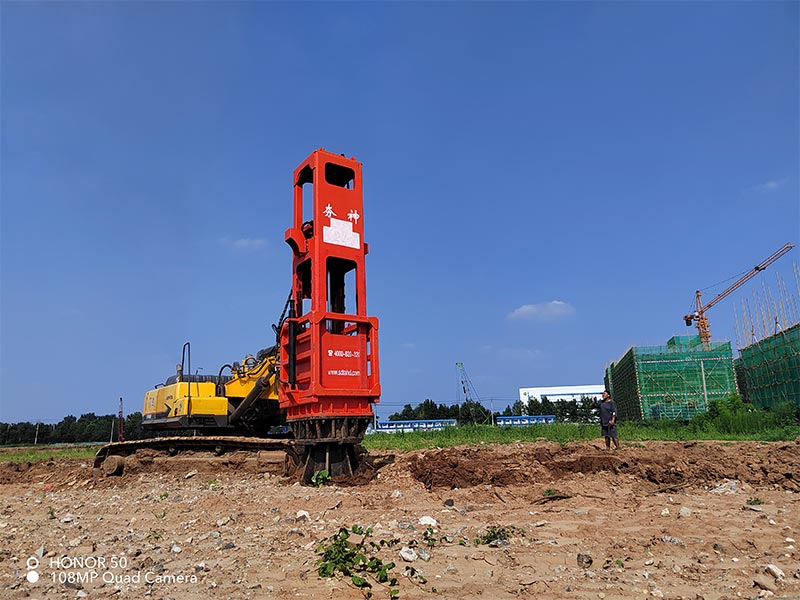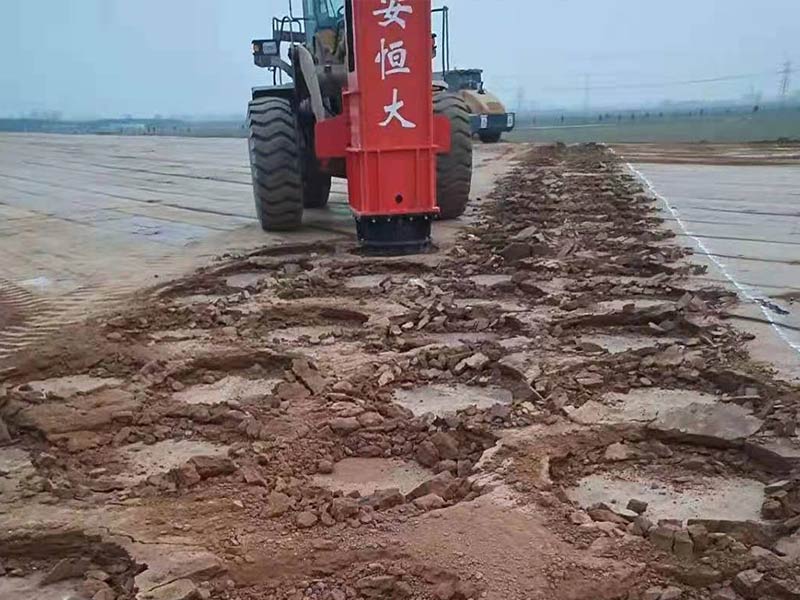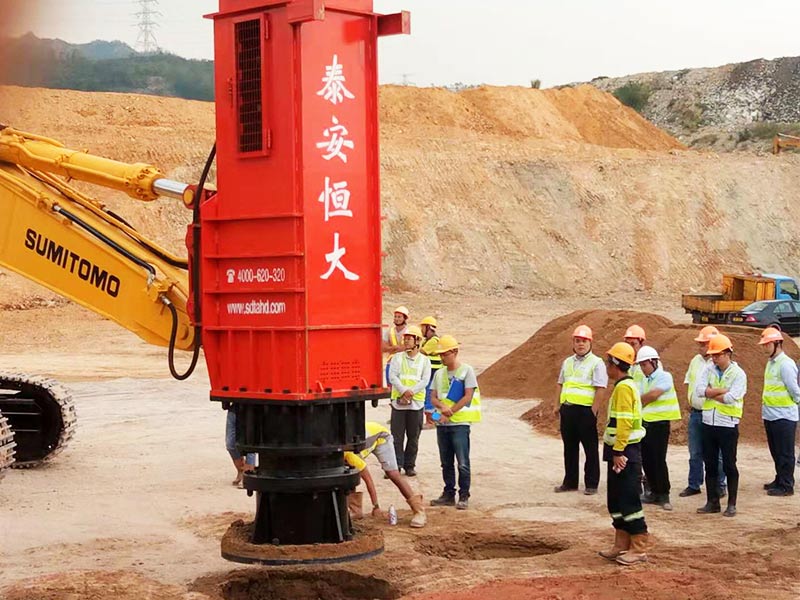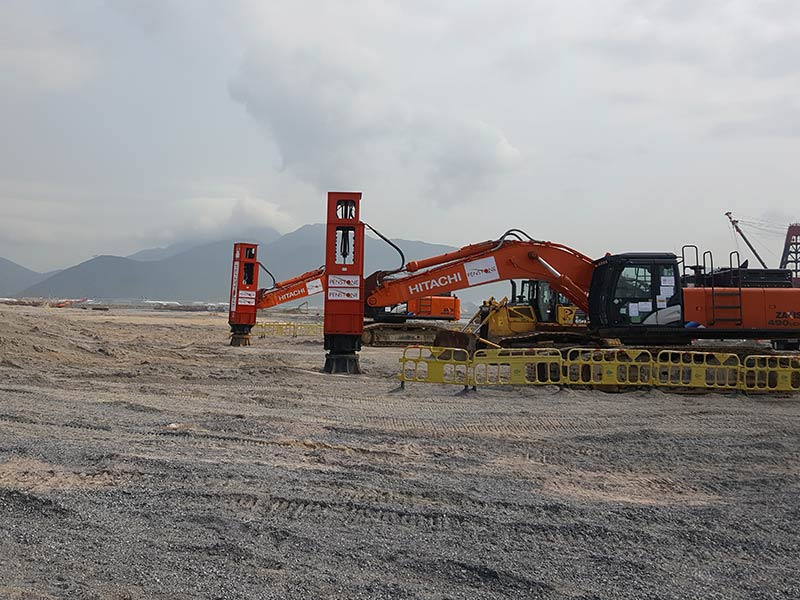What are the deep compaction techniques? - HENGDA RIC
updatetime:2023-02-15 14:37:57 pageviews:329views
Deep compaction due to vibration may also be achieved penetrating a hollow steel tube into the soil, a method referred to as Terra-Probe; the steel tube is vibrated down to the desired depth and then drawn up again while the hollow steel tube is vibrating; this procedure is repeated several times to get the required.

Control: the machine is accurately controlled from the excavator cab and the degree of compaction is electronically monitored,
Safety: the impact foot is in contact with the ground at all times and eliminates the risk of flying debris. Unlike conventional dynamic compaction, other activities can take place in close proximity,
Quality assurance: the impact energy and soil deflection are recorded by an on-board computer for presentation of compaction data to site managers. Results can verify work done to the client. The data can also highlight weak zones where extra fill is required, or zones where underground obstructions were present (eg. previously hidden old foundations),
Mobilisation: the RIC units are mounted on CAT 45 ton and CAT 85 ton excavators and can be mobilised within minutes of arrival on site,
Speed & cost: due to the fast ground coverage and the compaction efficiency, RIC generates a significant cost and time saving over conventional dynamic compaction methods with up to 75% cost and 100% time savings.

The Rapid Impact Compaction for the soil improvement uses a hydraulic hammer mounted on an excavator. The hammer with a weight ranging from 5 up to 12 tons is dropped freely from a height of 1.2 m on a large circular foot. Impacts repeated at a rate ranging from 40 up to 60 blows per minute plunge the steel foot creating a crater.
The control system installed in the operator’s cab allows for controlling the compaction process and recording the parameters such as impact energy or foot penetration. It can also be used to change the height from which the hammer is dropped.
The compaction in the RIC technology is usually preceded by creating a test plot where the compaction is performed for various spacing and rates of blows. Then, the local compaction of the improved soil is tested and the optimal grid spacing and the number of blows per one point is determined. Depending on the soils, the number of blows varies between 10 and 40 per one point.

The Rapid Impact Compaction technology works very well for all kinds of non-cohesive soils, especially for the compaction of gravels and sands. It can also be used on reclaimed areas where anthropogenic soils and uncompacted fills occur.
Most often, the RIC technology is used for the construction of enclosed buildings: under the foundation slabs/floors of industrial and commercial halls and under heavy surfaces of warehouses, tanks; for the construction of infrastructure: all types of roads and highways, under the road and rail embankments and often as the improvement of the base for parking lots and airport runways. A great advantage of the RIC method is its mobility and relatively small size of the equipment unit which allows for carrying out the works in areas with difficult access.
Depending on the soil type, water conditions and parameters of the hammer the soil compaction range reaches a depth between 4.0 and 5.0 m.
A safe working distance from the existing buildings, for which vibration monitoring is not necessary, amounts to approximately 5.0 up to 6.0 m. Than, the generated noise is within 90 dBA.

RIC technique is performed at the surface of a terrain and it comprises of a heavy excavator which is equipped with a specially designed arm onto which the hammer is attached. Within the hammer, a 5 to 10 drop weight is hydraulically lifted till a required height after which the weight is dropped using a hydraulic acceleration. This whole process of lifting and dropping of the weight takes place with a frequency of 30 to 80 times a minute.

